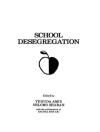Embrace the changing suburbs by changing your school!
As your students evolve, has your school evolved with them? Schools across the country face sweeping demographic changes and a reshaping of suburban scenery into a more urban landscape. This unique book offers not only an explanation of the increasing diversity in student makeup, but also ideas for acting as an agent of positive change for your school and tools to implement those ideas. Shelley Wepner and the experts at The Changing Suburbs Institute recommend ways you can improve student achievement by
- Developing a plan of action that addresses the need for more focused, culturally responsive student instruction
- Creating a culture that celebrates diversity and values cultural awareness
- Collaborating with universities and communities to promote professional development and student learning
- Providing programs for English learners such as tutoring, the arts, and summer support
- Involving parents to promote student achievement
Effective teaching and engaged learning flourish in schools where diversity and awareness are embraced. Changing Suburbs, Changing Students puts education in suburban America into perspective and gives you the tools to maintain high achievement for all!
’Any district dealing with changing cultures would find these ideas useful. The experiences and the scenarios are most applicable to schools facing an increase in ELL population.’
—Martin J. Hudacs, Superintendent
Solanco School District, Quarryville, PA
’This book helps administrators of suburban school districts understand the complexities of the job they hold. More importantly, it provides specific solutions to the challenges they face every day.’
—Ken Arndt, Superintendent
Community Unit School District #300, Carpentersville, IL
Innehållsförteckning
List of Figures
Foreword
Preface
Acknowledgments
About the Authors
Part I. The Challenges of Changing Suburban School Districts
1. The Changing Suburbs
What Do We Mean by the Changing Suburbs?
Schools in the Changing Suburbs
Guidelines for Moving Forward
Concluding Remarks
2. The School Leader′s Role in the Changing Suburbs
Role Similarities and Differences for Urban, Rural, and Suburban Leaders
Challenges for School Leaders in Changing Suburban School Districts
Guidelines for Succeeding in Changing Suburban Schools Districts
Concluding Remarks
Part II. Addressing the Challenges of Changing Suburban School Districts
3. Changing the Culture of the School
Opportunities and Challenges of Increasing Diversity in the Schools
Ways in Which Teachers and Schools Are Changing to Accommodate Increasing Diversity
Creating a School Culture That Works
Guidelines for Creating and Sustaining a Culture That Works
Concluding Remarks
4. Professional Development
Characteristics of High-Quality Professional Development
Contexts, Strategies, and Structures for Professional Learning
The Role of the School Leader in the Professional Development of Teachers
Guidelines for School Leaders for Establishing Conditions for Successful Professional Learning
Concluding Remarks
5. Implementing Programs for Culturally and Linguistically Diverse Student Populations
Overview of Program Needs for Diverse Student Populations
Helping Teachers to Create Culturally Responsive Classrooms
Curriculum and Program Changes
Assessment of Programs
Guidelines for School Leaders
Concluding Remarks
6. School-University Collaboration
Reasons for School-University Collaborations
Challenges With School-University Collaborations
Guidelines for Forming School-University Partnerships
Concluding Remarks
7. Creating an Elementary Community School
Description of School History
Definition of Community School
Transforming One School
Involvement of a College and University
Challenges in Transforming a School
Description of the School Today
Guidelines for Forming a Community School
Concluding Remarks
8. Working With Parents
The Importance of Parents as Partners in Children′s Education
Issues of Parents in Changing Suburban School Districts
Promoting Parent Engagement in Changing Suburban Schools
Guidelines for Working With Parents in Changing Suburban Schools
Concluding Remarks
Summary of Guidelines for School Leaders
References
Index












